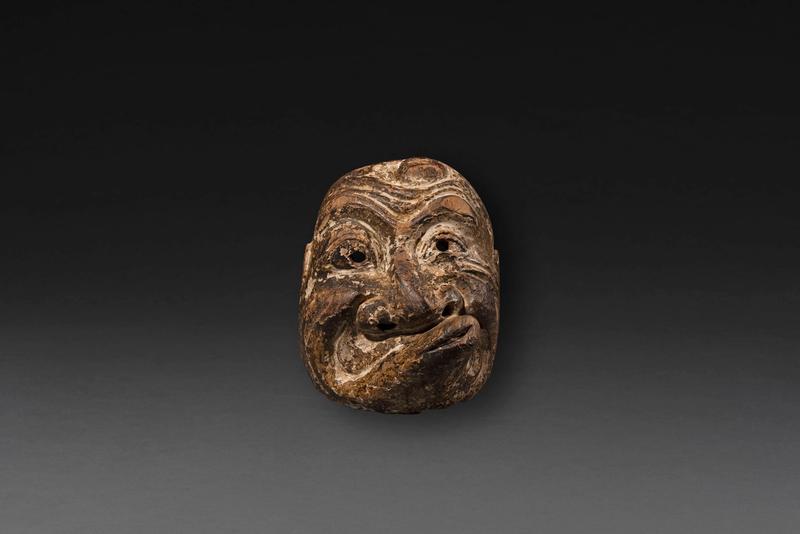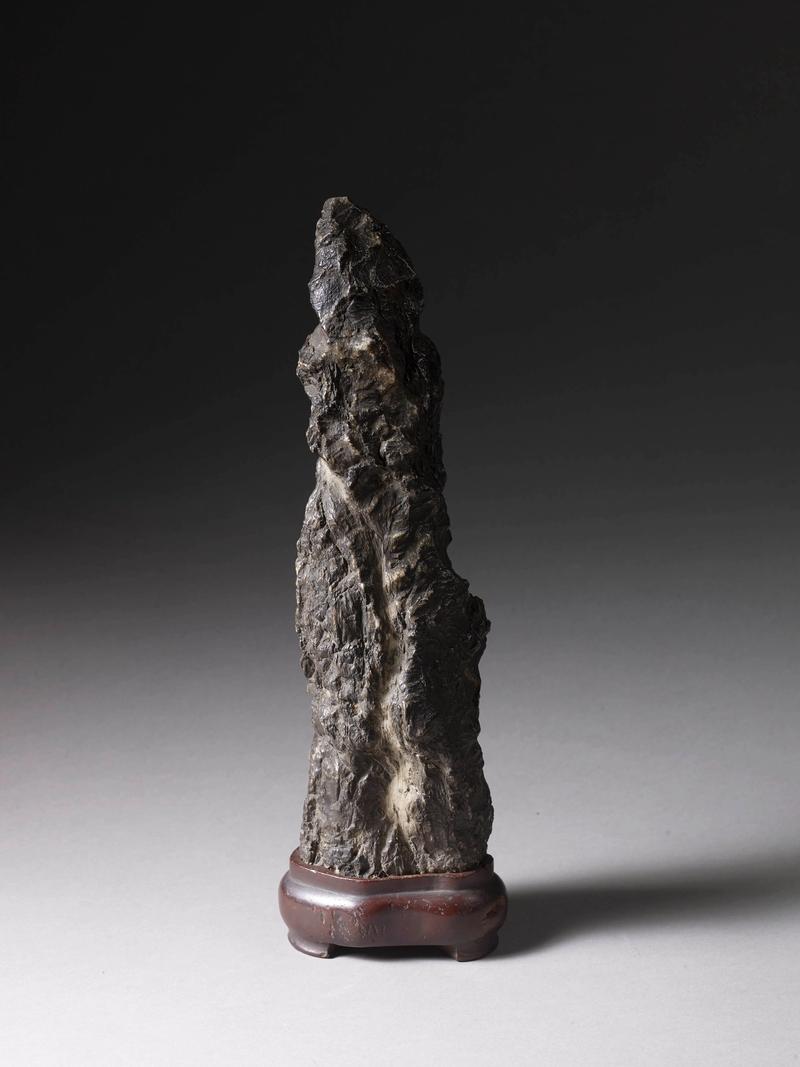A Tokoname storage jar.
Japan, 13th century, Kamakura period.
During the Kamakura (1185-1333) and Muromachi (1333-1568) periods, the kiln sites at Seto, Tamba, Shigaraki, Tokoname, Echizen and Bizen produced durable, high-fired stoneware vessels.
Tokoname jars were made by piling coils of clay, smoothing the interior and exterior surfaces, and allowing the clay to dry before adding another section. The wide rim and mouth were then formed on a potter's wheel and added to the top of the jar. The small base allowed the vessel to stand safely on a narrow step on the steep slope of a rising kiln floor; such kilns were built into the side of a hill and used wood for firing. The natural ash glazes took about a week to ten days to form and created unevenly coloured and randomly glazed surfaces often spotted with particles of fired earth that dropped from the kiln ceiling. Tokoname, which focused on agricultural storage vessels, was the largest centre of ceramic production in medieval Japan.
The rustic qualities embodied in these stone wares were perfectly suited for use in chanoyū (the tea ceremony) which, from the late fifteenth century, had become increasingly imbued with the newly emerging wabi-sabi sensibility, emphasising an admiration for the imperfect over the perfect.
Works of Art

A wood Noh mask of Koomote

A bronze flower vessel

A Suiseki (viewing stone)

A kakebotoke

A ceramic te-aburi (hand warmer)

A wood Kyōgen mask of Usobuki

A suiseki (viewing stone) of vertical form with a natural striation resembling a waterfall, with wood stand

A Chinese bronze censer

A Tokoname storage jar

A ceramic vase by Makuzu Kōzan II

A Suiseki (viewing stone)

A Suiseki (viewing stone)

A Chinese Suiseki (viewing stone)

A bronze flower vessel of mimikuchi

A pottery kake hanaire (hanging flower vessel)

A red lacquer Kamakura-bori dai-kogo (incense box)

A Lacquered Shield

A bronze brazier

A bronze hanging flower vessel

A black lacquer bon (tray)

A bronze brazier

An iron nyoi

A Tokoname storage jar















